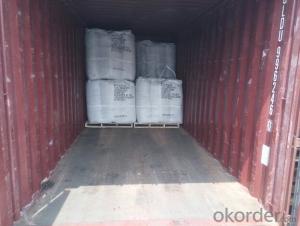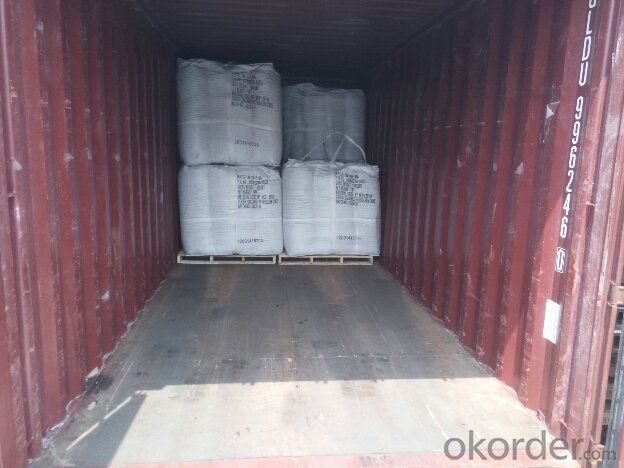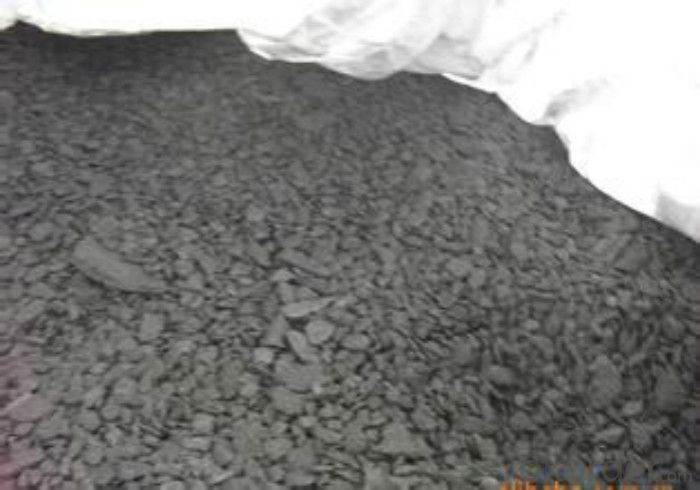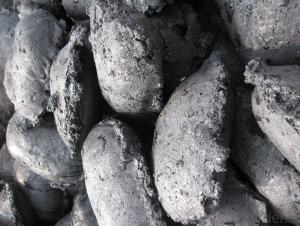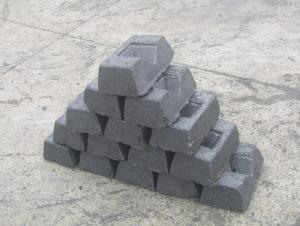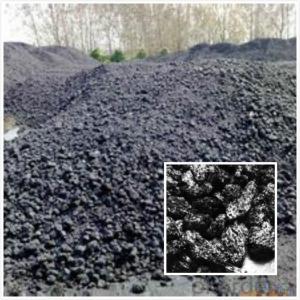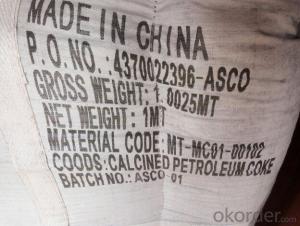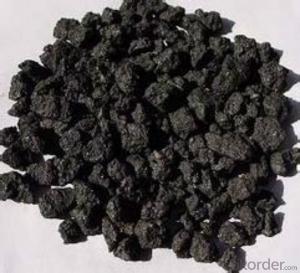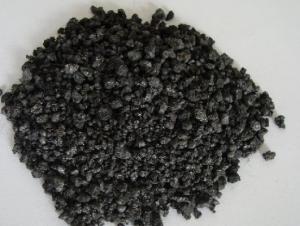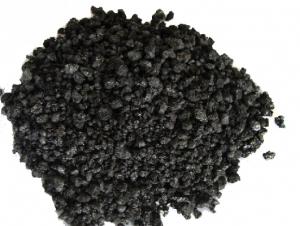Calcined Petroleum Coke with VM 0.8%max
- Loading Port:
- Shanghai
- Payment Terms:
- TT OR LC
- Min Order Qty:
- 19.9
- Supply Capability:
- 1009 m.t./month
OKorder Service Pledge
OKorder Financial Service
You Might Also Like
Intrduction
Carbon additive to ningxia production of anthracite as raw material, after washing, crushing, high temperature calcination, filter, etc. Craft refined and become.This is after the anthracite calcination generated high carbon content and low volatile component of the new product, is an ideal raw material to make steel.
Calcined Petroleum Coke comes from delayed coke which extracted from oil refinery. Although Calcined Petroleum Coke contains a little bit higher level of sulfur and nitrogen than pitch coke, the price advantage still makes it widely used during steel-making and founding as a kind of carbon additive/carburant.
Features
In the smelting process for reducing agent. Performance: replace the traditional oil carbon additive, decrease the cost of steelmaking. Features: low ash. low sulfur,low phosphorus, high calorific value. High ratio resistance,high mechanical strength,high chemistry activity. It is mainly used for metallurgy reductant inoculants, casting, refractory materials, machinery, electronics and other fields.
1) high absorption rate, it can be absorbed up to 90%.
2) absorbed more quickly than other carbon additive; no residue remains in furnace.Good quality
3) low Sulfur, the lowest can reach below 0.20%; low nitrogen, normally below 200ppm (0.02%). Steady Supply
Specifications
CPC | |||
F.C.% | 98.5MIN | 98.5MIN | 98MIN |
ASH % | 0.8MAX | 0.8MAX | 1MAX |
V.M.% | 0.7 MAX | 0.7 MAX | 1 MAX |
SULFUR % | 0. 5MAX | 0. 7MAX | 1MAX |
MOISTURE % | 0.5MAX | 0.5MAX | 1MAX |
Pictures
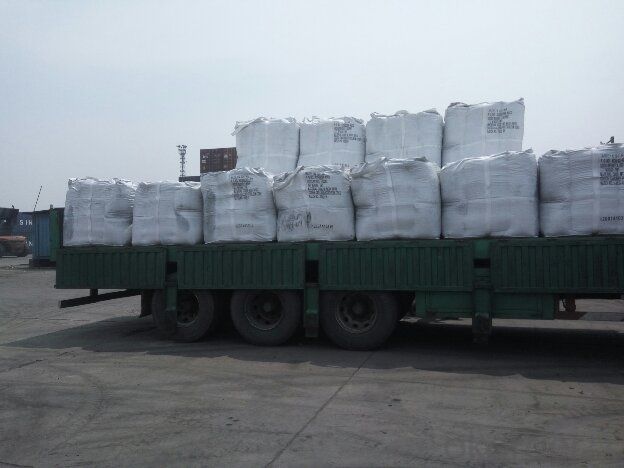
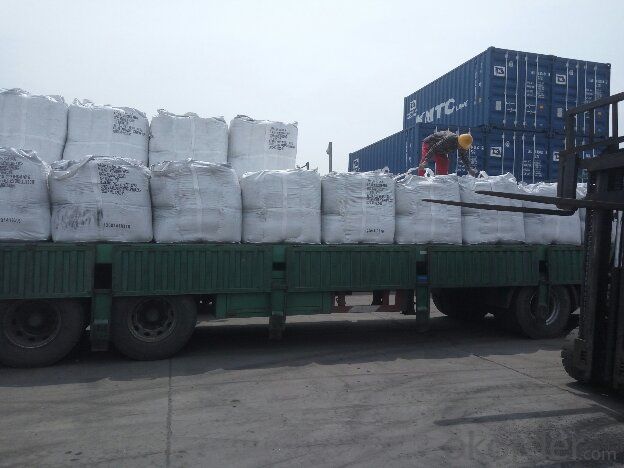
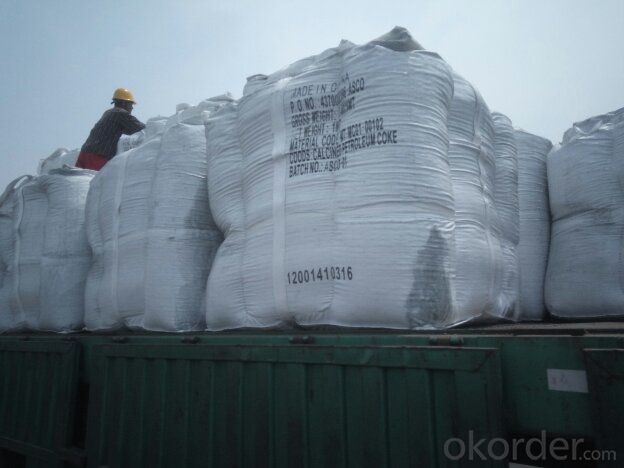
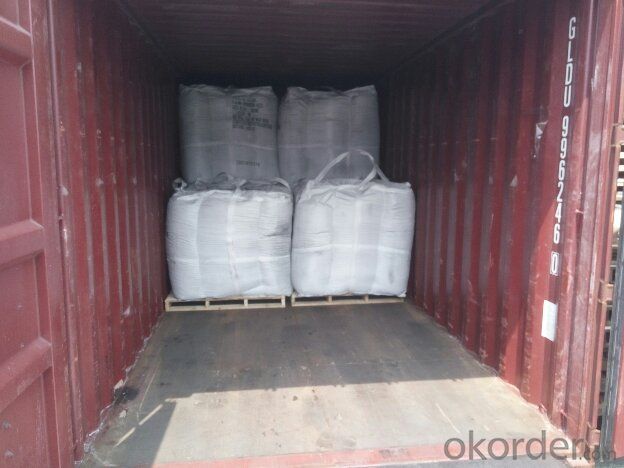
FAQ:
(1)CPC could be as fuel
Petroleum coke is a material relatively low in cost and high in heat value and carbon content with good chemical stability, making it an efficient and costeffective fuel for producing metal, brick and related products.
(2)CPC could be as Graphite Electrodes
Graphite can be produced from lowsulfur needle petroleum coke, which must be heated above 5,432 degrees Fahrenheit.
(3)CPC could be as Anodes
Calcined petroleum coke, often low in sulfur and metallic impurities, is used to make anodes for
the smelting industry.Calcined petroleum coke is mixed with coal tar pitch in the production of
anodes.
- Q: How does carbon contribute to the structure of DNA?
- The structure of DNA relies heavily on carbon, as it plays a critical role in its composition. Carbon is a crucial element in the formation of the sugar-phosphate backbone, which is an integral part of the DNA molecule. This backbone consists of alternating sugar and phosphate molecules, with the sugar molecule being deoxyribose in DNA. Deoxyribose sugar contains five carbon atoms, making carbon a significant component in its structure. These carbon atoms provide stability and rigidity to the backbone, ensuring the overall structure of the DNA molecule remains intact. Additionally, carbon also contributes to the formation of the nitrogenous bases that form the ladder-like structure of DNA. There are four nitrogenous bases in DNA: adenine (A), guanine (G), cytosine (C), and thymine (T). Carbon atoms are present in the structure of each of these bases, giving them their distinct chemical properties. Various functional groups containing carbon, such as amino and keto groups, actively participate in hydrogen bonding and stacking interactions that determine the base pairing within the DNA double helix. To summarize, carbon is an indispensable element in the structure of DNA. It not only provides stability and rigidity to the sugar-phosphate backbone but also plays a crucial role in the formation of the nitrogenous bases. The unique properties of carbon enable DNA to maintain its double helix structure and facilitate the accurate transmission of genetic information.
- Q: What are the impacts of carbon emissions on the stability of polar ice caps?
- Carbon emissions have significant impacts on the stability of polar ice caps. The primary cause of these emissions is the burning of fossil fuels, which releases large amounts of carbon dioxide into the atmosphere. As a greenhouse gas, carbon dioxide traps heat and contributes to global warming and climate change. This, in turn, leads to the melting of polar ice caps. The ice caps in the polar regions are highly sensitive to changes in temperature. As the Earth's temperature rises due to increased carbon emissions, the polar ice caps experience accelerated melting. This causes a rise in sea levels, which has consequences for coastal regions worldwide. Rising sea levels can lead to increased flooding, erosion, and the loss of valuable coastal ecosystems. Moreover, the stability of polar ice caps is crucial for maintaining the Earth's climate balance. The ice caps reflect sunlight back into space, acting as a natural cooling mechanism for the planet. As they melt, less sunlight is reflected, and more is absorbed by the Earth's surface, exacerbating the warming effect. This creates a feedback loop, where the melting of ice caps leads to further warming, causing even more ice to melt. The impacts of carbon emissions on polar ice caps are not limited to rising sea levels and climate change. The loss of ice also affects the delicate balance of ecosystems in these regions. Polar ice caps provide habitat and a food source for a diverse range of organisms, including polar bears, seals, and various species of birds. The melting of ice disrupts these ecosystems, leading to declines in wildlife populations and potential extinctions. Moreover, the melting of polar ice caps also affects global ocean currents and weather patterns. The cold, dense water that forms from melting ice sinks to the bottom of the ocean and drives important oceanic circulation patterns. Changes in these patterns can have far-reaching consequences, including altering the distribution of marine species, impacting fisheries, and influencing regional climates. To mitigate the impacts of carbon emissions on polar ice caps, it is crucial to reduce greenhouse gas emissions and transition to cleaner and renewable energy sources. International efforts, such as the Paris Agreement, aim to limit global warming and reduce carbon emissions to prevent further ice cap melting. Additionally, supporting research and monitoring programs in polar regions can help us better understand these complex systems and develop effective strategies for their conservation.
- Q: What are the environmental impacts of carbon emissions?
- Carbon emissions have a wide range of significant environmental consequences. One of the most urgent issues is their contribution to climate change. Carbon dioxide (CO2) is a greenhouse gas that traps heat in the Earth's atmosphere, causing global temperatures to rise. This temperature increase has extensive effects, including the melting of polar ice caps, rising sea levels, and more frequent and severe extreme weather events like hurricanes, droughts, and floods. Another environmental consequence of carbon emissions is ocean acidification. When CO2 is released into the atmosphere, a portion of it dissolves into the oceans and forms carbonic acid. This acidification disrupts the ocean's pH balance, which is crucial for the survival of marine life. It has a negative impact on the growth and development of coral reefs, shellfish, and other organisms that rely on calcium carbonate to create their shells or skeletons. Moreover, carbon emissions contribute to air pollution. The burning of fossil fuels not only releases CO2 but also other pollutants like nitrogen oxides (NOx), sulfur oxides (SOx), and particulate matter. These pollutants have harmful effects on air quality, leading to respiratory problems, cardiovascular diseases, and other health issues for humans and animals. Additionally, they contribute to the formation of smog and haze, reducing visibility and further deteriorating air quality. Carbon emissions also indirectly affect ecosystems. Changes in climate patterns can disrupt ecosystems and impact the distribution and behavior of various species. This can result in alterations in bird migration patterns, the timing of plant flowering, and the availability of food sources. These disruptions can have cascading effects on entire ecosystems, potentially leading to the extinction of certain species or the invasion of non-native species. Finally, carbon emissions contribute to the depletion of natural resources. Extracting and burning fossil fuels for energy production not only release carbon dioxide but also necessitate the destruction of habitats and ecosystems. This includes activities like coal mining, oil drilling, and deforestation for palm oil plantations or grazing lands. These actions result in the loss of biodiversity, habitat destruction, and soil erosion, further aggravating environmental degradation. In conclusion, the environmental impacts of carbon emissions are varied and extensive. They encompass climate change, ocean acidification, air pollution, disruption of ecosystems, and the depletion of natural resources. Addressing these impacts requires a collective effort to reduce carbon emissions and transition towards cleaner and more sustainable energy sources.
- Q: What are carbon isotopes and how are they used in scientific research?
- Carbon isotopes are different forms of carbon that vary in the number of neutrons in their nucleus. The most common carbon isotope is carbon-12, which has 6 protons and 6 neutrons. However, there are also carbon-13 and carbon-14 isotopes, which have 7 and 8 neutrons respectively. In the realm of scientific research, carbon isotopes are utilized for their distinctive characteristics in a variety of ways. One significant application is their use in radiocarbon dating. Carbon-14, a radioactive isotope, undergoes decay over time, allowing scientists to determine the age of organic materials up to 50,000 years old. By measuring the ratio of carbon-14 to carbon-12 in a sample, scientists can estimate the time since the organism's death. Moreover, carbon isotopes are employed in the study of carbon cycling in ecosystems. Since plants preferentially absorb carbon-12 over carbon-13, the isotopic composition of carbon in plants can provide information about their growth and carbon source. By analyzing isotopic signatures in plant tissues, scientists can gain insights into ecological processes like photosynthesis, respiration, and carbon dioxide exchange between different parts of the ecosystem. Carbon isotopes also play a role in examining animal diets. The carbon isotopic composition in an animal's tissues reflects the carbon sources it consumes. By analyzing the carbon-13 to carbon-12 ratio, scientists can determine whether an animal primarily consumes plants or other animals, offering insights into food webs, trophic levels, and ecological interactions. Furthermore, carbon isotopes are valuable in fields like paleoclimatology, where the carbon-13 to carbon-12 ratio in ancient ice cores or ocean sediments can provide information about past climate conditions. Isotopic analysis of carbon compounds is also used in forensic science, geochemistry, and environmental monitoring to trace the origin and fate of pollutants and contaminants. In conclusion, carbon isotopes are different forms of carbon atoms with varying numbers of neutrons. They are extensively utilized in scientific research for radiocarbon dating, studying carbon cycling in ecosystems, determining animal diets, understanding past climate conditions, and other fields. Their unique properties make them indispensable tools for comprehending the natural world and our place within it.
- Q: Why can carbon fiber in addition to static electricity ah?
- The elimination of electricity is based on the leakage of charge. The carbon fiber has a weak corona discharge, so it combines the charge.
- Q: What is carbon nanocomposite?
- Carbon nanocomposite refers to a material that is made up of carbon nanoparticles embedded in a matrix material. This combination results in a material that exhibits enhanced mechanical, thermal, and electrical properties, making it suitable for a wide range of applications such as aerospace, electronics, and energy storage.
- Q: How is carbon used in the production of fertilizers?
- Carbon is an essential component in the production of fertilizers. It is used in various forms such as organic matter, carbon dioxide, and carbonates. These carbon sources are utilized to enhance soil fertility, improve plant growth, and increase crop yield. Organic matter, such as compost, manure, and crop residues, contains carbon in the form of decomposed plant and animal materials. When added to the soil, these organic sources of carbon provide essential nutrients, including nitrogen, phosphorus, and potassium, to plants. They also improve soil structure, water holding capacity, and microbial activity, which are crucial for plant growth. Carbon dioxide (CO2) is another important carbon source used in the production of fertilizers. CO2 is captured from industrial emissions and incorporated into the production process. It is converted into various chemical compounds, such as urea and ammonium bicarbonate, which are widely used as nitrogen fertilizers. These fertilizers release nitrogen slowly, ensuring a steady supply of nutrients to the plants over an extended period of time. Additionally, carbonates, such as calcium carbonate, are used as neutralizing agents in fertilizers. They help to balance the pH levels of acidic soils, making them more favorable for plant growth. Carbonates also provide a source of calcium, an essential nutrient for plants, further enhancing their growth and development. In summary, carbon plays a crucial role in the production of fertilizers by providing essential nutrients, improving soil fertility, and enhancing plant growth. Whether in the form of organic matter, carbon dioxide, or carbonates, carbon is a vital component that contributes to the success of modern agriculture.
- Q: What is the atomic weight of carbon?
- The atomic weight of carbon is approximately 12 atomic mass units.
- Q: when to use hard carbon, and when to use soft carbon. Neutral charcoal can play what role? Thank you.
- Hard charcoal first used to draft the draft, then is depicted. On the tone of most people love compared with neutral charcoal, personal love. At the end of the characterization, soft and hard together. That's probably it.
- Q: What is a carbon electrode? What's the use? What's the current situation in the industry? Try to be specific. Thank you
- Tons of ferrosilicon smelting costs reduced by 300-400 yuan, tons of calcium carbide smelting costs reduced by more than 100 yuan.Carbon electrode is an energy saving and environmental friendly product. It can greatly reduce power consumption and reduce pollution in the use of calcium carbide and ferroalloy ore heating furnaces. It is the replacement product of electrode paste. In the submerged arc furnace with the same capacity, electrode paste self baking electrode compared with the following characteristics: improving smelting furnace production, reduce power consumption and reduce the labor intensity (15-20%; 1 tons of iron smelting alloy consumption of electrode paste carbon electrode about 60kg, consumption is only about 12kg, reduce the operating times of the electrode), simplified production process; to avoid or reduce the self baking electrode frequent "broken soft" and "hard" accidents, improve the working environment, reduce operating costs.
Send your message to us
Calcined Petroleum Coke with VM 0.8%max
- Loading Port:
- Shanghai
- Payment Terms:
- TT OR LC
- Min Order Qty:
- 19.9
- Supply Capability:
- 1009 m.t./month
OKorder Service Pledge
OKorder Financial Service
Similar products
Hot products
Hot Searches
Related keywords
